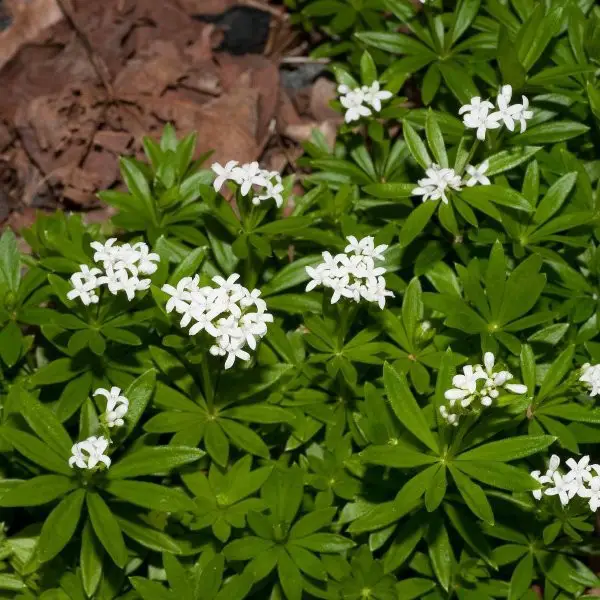Olive Trees: 24 Types, Leaves, Plant Care & Growing Guide (Photos)
If you’re seeking a tree that embodies the essence of the Mediterranean, look no further than olive trees. With their attractive leaves and delicious olives, they’re a great choice for adding a touch of warmth to your landscape. Olive trees come in a range of varieties, including evergreen and deciduous types, each with its unique characteristics. In this guide, we’ll delve into the different types of olive trees, their leaves, care requirements, and how to grow them.
Olive trees have been a staple of Mediterranean landscapes for centuries, and it’s easy to see why. They’re low-maintenance, produce delicious fruit, and can thrive in a variety of conditions. Whether you’re looking to add some greenery to your backyard or create a stunning focal point, olive trees are an excellent choice. There are many different types of olive trees, each with its own unique characteristics.
From the evergreen Amfissa Olive Tree to the deciduous Coratina Olive Tree, there’s an olive tree out there for everyone. We’ll explore 24 different varieties in this guide, including popular options like Frantoio and Koroneiki. In addition to discussing the different types of olive trees, we’ll also cover how to plant, grow, and care for them. From the best growing zones to the ideal temperature and soil conditions, we’ll provide you with everything you need to know to get started.
Whether you’re a seasoned gardener or just starting out, this guide is designed to help you succeed. With their attractive leaves and delicious olives, olive trees are a great choice for adding some Mediterranean flair to your landscape.
What are olive trees?
Olive trees have been cultivated for thousands of years, with their origins tracing back to the Mediterranean region. As a member of the fruit family, olives share ancestry with other fruits like citrons and dates. The evergreen olive tree is characterized by its year-round foliage, comprising alternate, simple, and oblong leaves with smooth margins. Its small white flowers bloom in clusters, while the fruit itself takes the form of a drupe, featuring a hard pit encased in flesh.
As the seasons change, olives are typically harvested between October and November when they’re either green or black and ripe for consumption. Following their harvest, olives undergo a curing process in brine or oil before being enjoyed.
Facts about olive trees
For centuries, olive trees have been revered as one of the oldest cultivated plants on the planet. Their roots run deep in the Mediterranean Basin, where they’ve thrived for thousands of years. In fact, olives were first documented in ancient literature around 3000 BC. This storied tree has played a significant role in human history, symbolizing peace and prosperity. In ancient Greece, victorious athletes and warriors alike received olive wreaths as tokens of triumph.
Today, the olive branch remains an iconic symbol of peaceful resolution in the Middle East. There are two primary types of olive trees: wild and cultivated. Wild olive trees can reach towering heights of up to 30 feet, while their cultivated counterparts are typically pruned for a more manageable size. The average lifespan of these remarkable trees is roughly between 500 and 1500 years, with some ancient specimens in Greece believed to be over 2000 years old.
Despite their impressive age, olive trees are surprisingly adaptable, tolerating a wide range of growing conditions. They prefer well-drained, sandy soil and full sun, but can survive on as little as 12 inches of rainfall per year. Their drought-tolerant nature makes them an attractive choice for farmers looking to cultivate this versatile tree. Olive trees are prized not only for their fruit – the olives themselves – but also for their oil and wood.
Olives are typically picked green, then cured in brine or oil to turn them black or brown. The process of extracting olive oil from these fruits is a labor-intensive one, involving pressing and careful handling to preserve the delicate flavor and aroma. The wood of the olive tree, meanwhile, is highly sought after for carving and crafting fine furniture.
This dense, durable hardwood has been used by artisans for generations, its unique characteristics making it an ideal choice for creating beautiful, long-lasting pieces.
Olive tree leaves.
The olive tree’s foliage is characterized by its leaves, which typically exhibit a verdant hue that can occasionally shift to brown or black. These elliptical or oval-shaped leaves boast a smooth texture and may feature serrated or lobed edges. A notable aspect of olive tree leaves is their alternate arrangement on the stem, with each leaf being simple and showcasing a prominent midrib. The upper surface of the leaf tends to be glossy, while its lower surface takes on a more muted appearance.
On average, olive tree leaves measure between two and six inches in length.
Olive tree bark.
When assessing an olive tree’s health, a visual examination of its bark can provide valuable insights. Typically, young olive trees exhibit smooth, gray bark, whereas mature trees display thick and cracked bark. However, if the tree is struggling with poor health, the bark may appear discolored or shed flakes. To effectively identify olive tree bark, consider the following signs:
• Young trees typically feature a smooth, gray bark.
• Older trees often display thick, cracked bark.
• Unhealthy trees may exhibit discolored or shedding bark.
24 Different Types of Olive Trees.
Olive trees come in a diverse array of varieties, each boasting distinct features. By far, the most prevalent and well-known type is the European Olive Tree (Olea europaea), with its roots firmly planted in the Mediterranean region. This species has thrived for centuries in the warm climates of countries such as Greece, Italy, and Spain.
Amfissa Olive Tree (Olea europaea ‘Amfissa’).
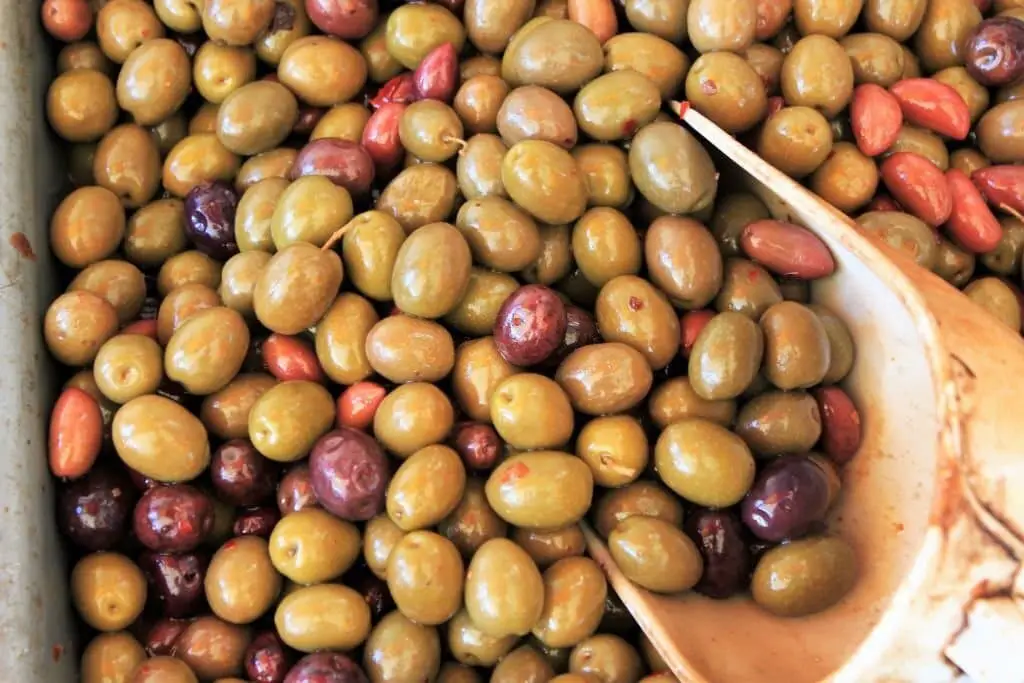
The Amfissa olive tree, a cultivar of the Olea europaea or European olive tree, has its roots in Greece’s Peloponnese region. Its defining characteristics include a robust size and rounded shape, setting it apart from other olive trees. The fruit of the Amfissa olive tree is notable for its large size and dark colour, while its high-quality oil makes it a valuable resource. Additionally, the Amfissa olive tree serves as an ornamental piece in many gardens.
For those seeking to cultivate an olive tree, the Amfissa variety is an attractive choice due to its low maintenance requirements and drought tolerance. In fact, with proper care, this hardy tree can reach heights of up to 20 feet (six meters) and live for centuries.
Arbequina Olive Tree (Olea europaea ‘Arbequina’).
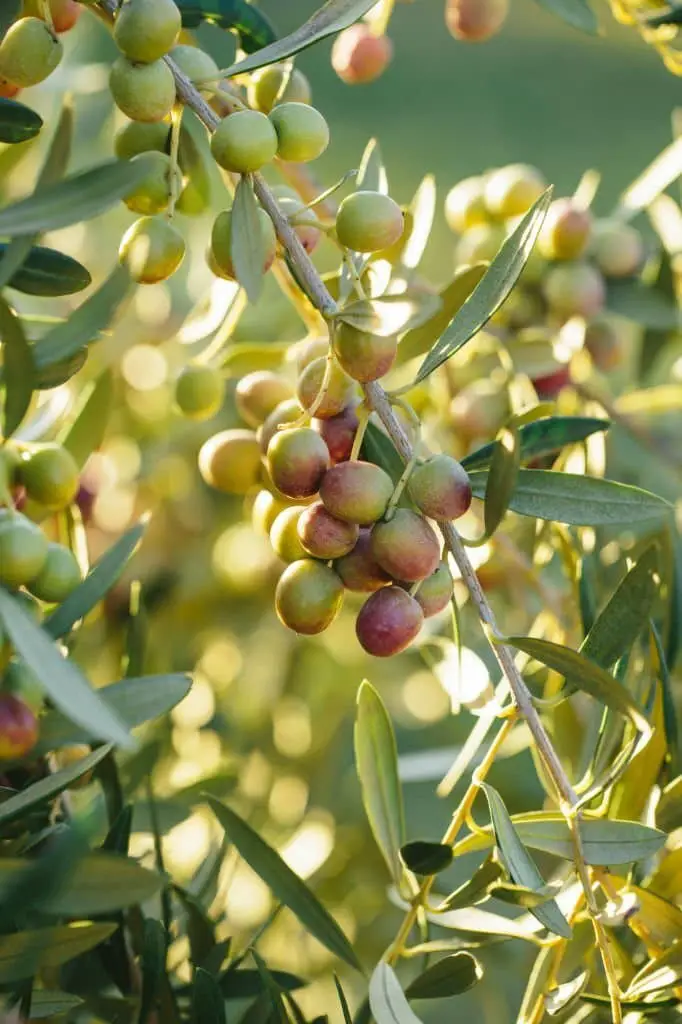
With roots tracing back to the Mediterranean region, the Arbequina olive tree is a compact, evergreen species that has garnered popularity in home gardens. Its name ‘Arbequina’ stems from the town of Arbeca in Catalonia, Spain, where this variety is believed to have originated. Known for their hardiness and adaptability, Arbequina olive trees thrive on a wide range of soil types, making them an accessible choice for amateur gardeners.
When fully grown, these trees can reach heights of up to 15 feet, boasting lifespans exceeding a century. The arbequina’s foliage is characterized by small, oval-shaped leaves with a glossy green hue and silvery-white undersides, adding a touch of elegance to any landscape.
Cailletier Olive Tree (Olea europaea ‘Cailletier’).
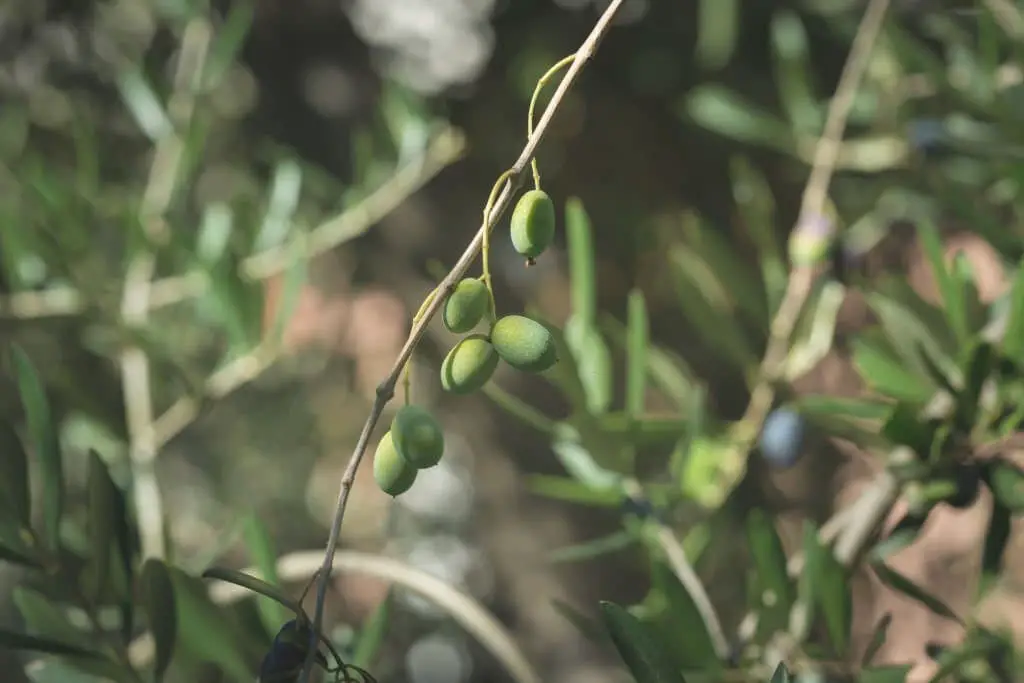
Cailletier is a cultivar of the olive tree that originated in Southern France, with ‘cailletier’ derived from the French word for ‘olive’, Olea. Characterized by large, dark green leaves and black olives, this variety stands out for its versatility. The fruit yields oil, while the tree itself serves as a striking ornamental plant. Growing cailletier olive trees is remarkably effortless, as they thrive in a broad spectrum of soils.
They can be cultivated in full sun or partial shade, preferring well-drained soil and displaying moderate drought tolerance. Moreover, these trees are resistant to most pests and diseases, making them an attractive choice for gardeners seeking low-maintenance yet rewarding additions.
Cerignola Olive Tree (Olea europaea ‘Cerignola’).
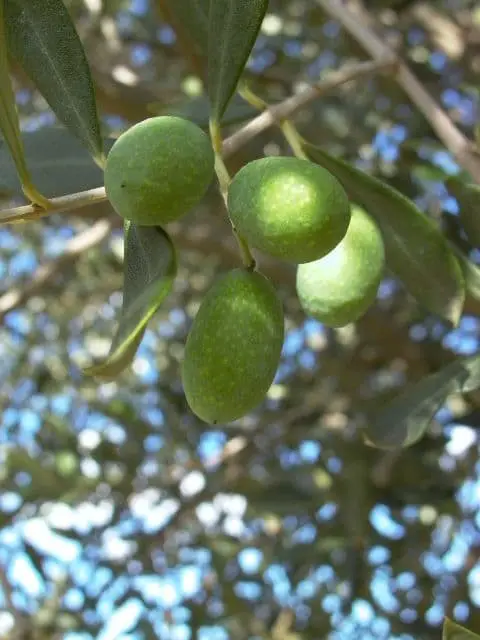
In the realm of olive cultivation, the Cerignola olive tree stands out for its exceptional characteristics. This cultivar yields an abundance of large, dark olives that are prized for both their oil production and use as table delicacies. Specifically, it thrives in the province of Foggia within Italy’s Apulia region. Notably, the Cerignola olive tree boasts impressive resilience, capable of withstanding harsh cold temperatures.
Its robust nature also renders it resistant to pests and diseases, making it an attractive choice for growers. In terms of its physical stature, this tree can grow up to 15 feet in height, a testament to its remarkable vitality.
Chemlali Olive Tree (Olea europaea ‘Chemlali’).
The Chemlali olive tree, a cultivar of Olea europaea, is renowned for its fruit production. Its origins date back to Algeria’s Chemlal region. This majestic tree can grow up to 20 meters tall, with a trunk diameter reaching as much as one meter. Its oblong-shaped leaves measure up to 12 centimeters in length, while springtime brings forth white flowers. The fruits of the Chemlali olive tree are notable for their large, oval shape and lengths of up to four centimeters.
Initially green-skinned, they turn black upon ripening. The fruit’s bitter flesh is used to produce high-quality olive oil. This versatile tree finds its way into the cultivation practices of various countries, including Algeria, Tunisia, Morocco, Spain, Portugal, Italy, Greece, Turkey, and Syria. In Algeria specifically, regions such as Constantine, Oran, Blida, and Tlemcen provide an ideal environment for the Chemlali olive tree to thrive.
Similarly, Tunisia’s Kairouan, Sousse, and Nabeul areas support its cultivation.
Coratina Olive Tree (Olea europaea ‘Coratina’).
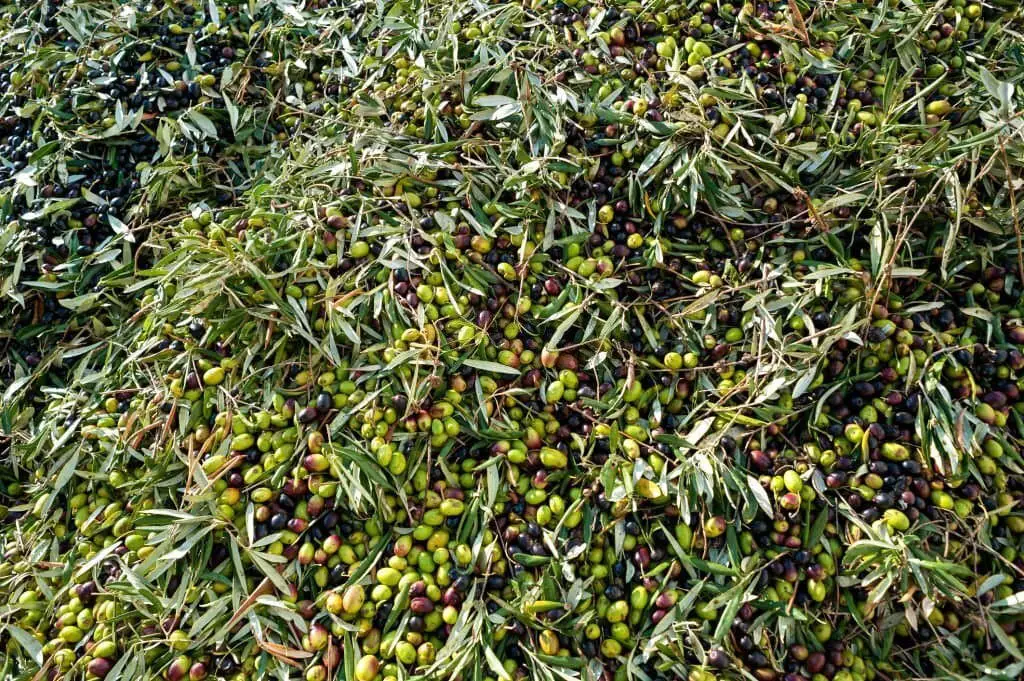
From Puglia, Southern Italy, comes this beloved Coratina olive tree cultivar. Its distinctive flavor profile is characterized by fruity and peppery notes with a subtle bitterness that lingers on the palate. Notably, this robust oil boasts an impressive polyphenol content, making it an excellent choice for cooking purposes. Its high heat tolerance ensures that its flavor remains intact even when subjected to intense culinary heat.
Frantoio Olive Tree (Olea europaea ‘Frantoio’).
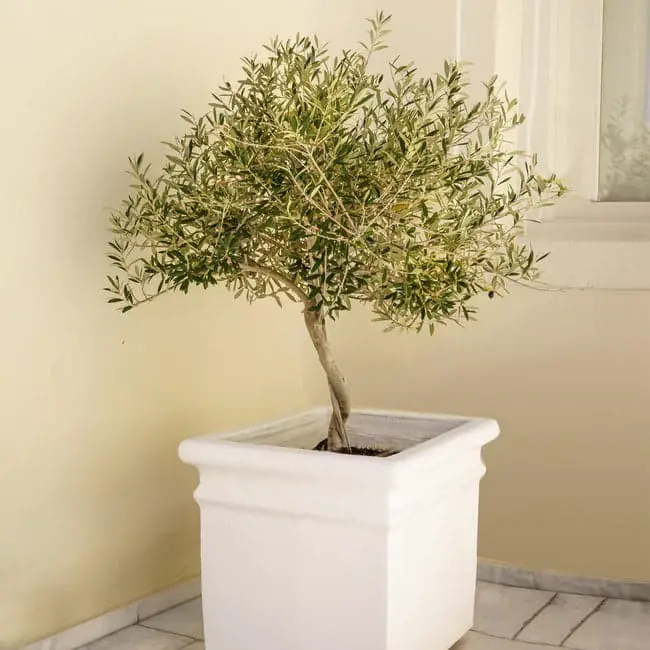
The Frantoio olive tree stands out with its sprawling canopy, reaching heights of 20-30 feet tall and wide. Its elliptical leaves boast a dark green, glossy hue, accompanied by small white flowers that bloom in the spring. This self-fertile variety produces large, oval-shaped fruit that ripens in the fall, featuring a greenish-black color. As a popular choice for home gardens and landscapes in warm climates, it’s no wonder this tree has gained widespread acclaim.
Native to the Mediterranean region, the Frantoio olive tree was first introduced to California in the 1800s, eventually becoming one of the most sought-after varieties grown in the state. Its remarkable tolerance for drought allows it to thrive in poor, dry soils, while its resistance to numerous diseases further solidifies its reputation as a hardy and reliable choice.
Gordal Sevillano Olive Tree (Olea europaea ‘Gordal Sevillano’).
The Gordal Sevillano olive tree stands tall at heights of up to 20 feet, its evergreen foliage a striking feature with dark green leaves that glisten in the light. The subtle beauty of white or pale pink flowers adds an extra layer of charm to this majestic tree. Its crowning glory, however, is the fruit – large, round olives that mature into a deep purple-black hue.
Native to the Mediterranean region, it’s no surprise that the Gordal Sevillano olive tree is a prized cultivation in Spain, with many growers appreciating its dual appeal as both a productive source of up to 50 pounds of olives annually and a stunning ornamental piece.
Kalamata Olive Tree (Olea europea ‘Kalamata’).
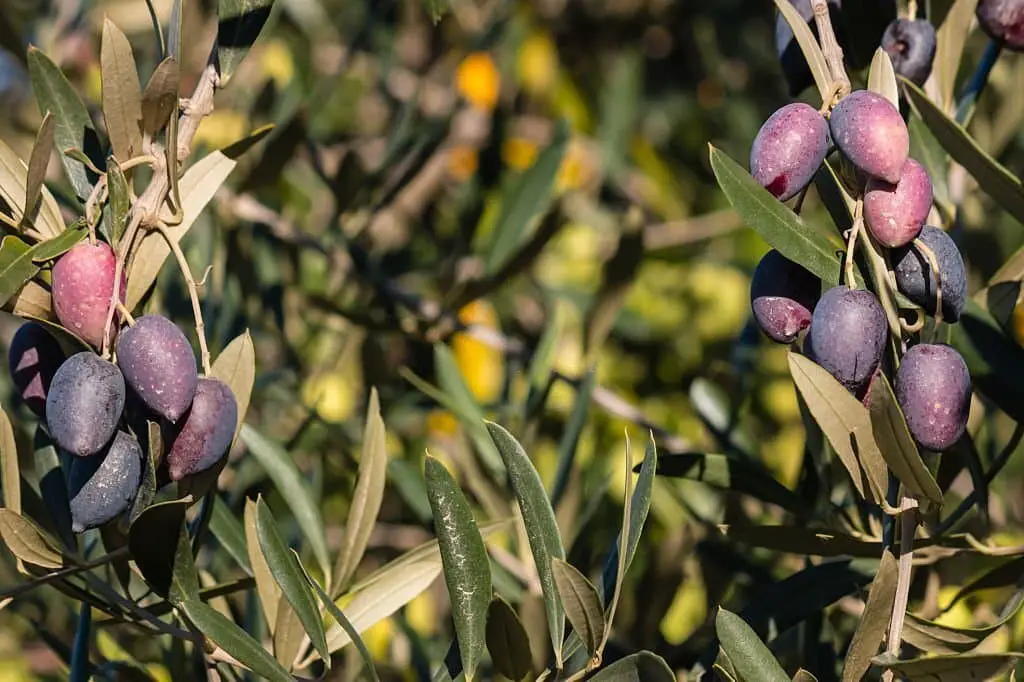
With its rich, velvety texture and robust flavor profile, the Kalamata olive is a prized ingredient in many Mediterranean dishes. Native to Greece’s Peloponnese region, this iconic olive variety is deeply rooted in the country’s culinary heritage.
The name ‘Kalamata’ originates from the city of Kalamata, situated in southwestern Peloponnese. This region’s unique climate and soil conditions allow the Kalamata olive tree to thrive, producing fruit with a distinctive fruity flavor profile.
Beyond its delicious taste, the Kalamata olive is also prized for its versatility. It’s a popular addition to salads, pasta dishes, bread, pizza, as well as being used in olive oil and vinegar blends. When it comes to cooking with this olive variety, the possibilities are endless.
Interestingly, the Kalamata olive tree itself is an evergreen that can reach heights of up to 20 feet (six meters).
Its dark green, glossy leaves and white flowers create a striking visual display, while its black olives with smooth, meaty texture remain the star attraction.
Koroneiki Greek Olive Tree (Olea Europea ‘Koroneiki’).
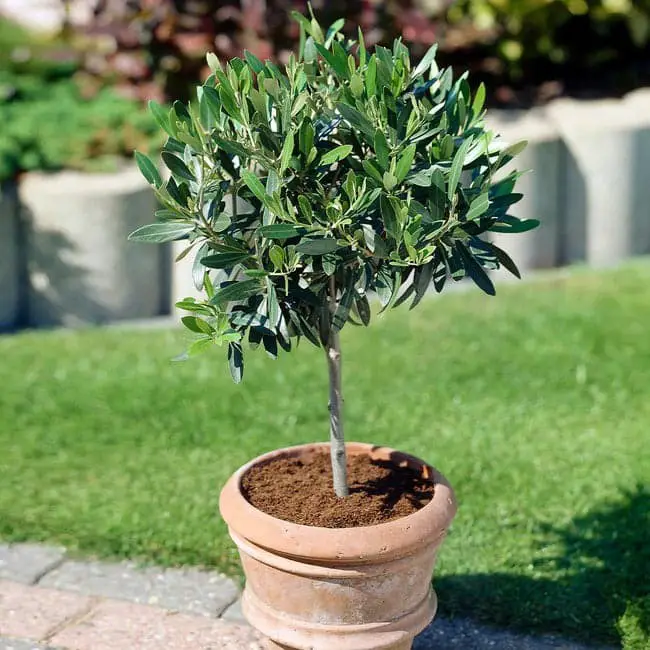
The Koroneiki olive tree, native to southern Greece’s Peloponnese peninsula, boasts small, black fruits with exceptional oil content. Its versatility in culinary applications is impressive – the oil can be used as a salad dressing, dip or spread, and even as a cooking oil. Furthermore, the Koroneiki olive tree plays a role in the production of olive oil soap. What’s more, it’s an excellent choice for home gardens and landscapes due to its attractive foliage and compact size.
Reaching up to 15 feet (45 meters) in height with a spread of 20 feet (60 meters), this hardy tree thrives in USDA zones eight through ten.
Lecciana Olive Tree (Olea Europea ‘Lecciana’).
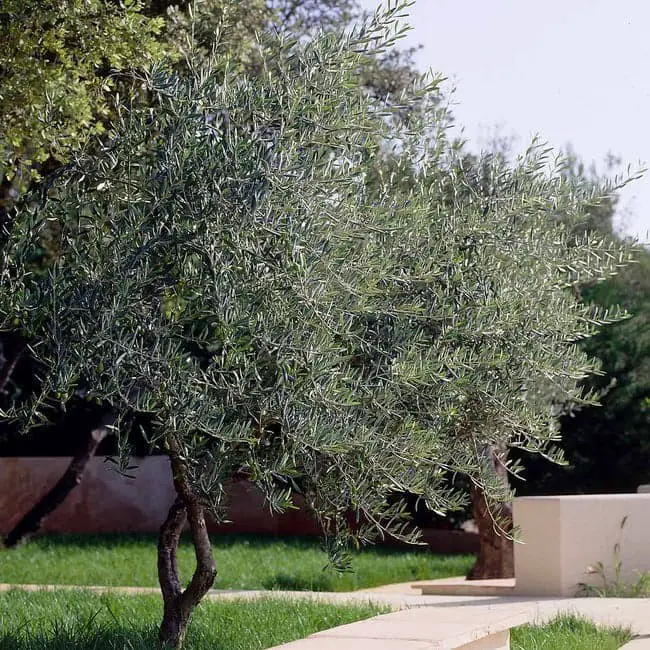
The Lecciana Olive Tree stands out for its stunning appearance and impressive growth rate, reaching heights of up to 20 feet tall. Its dark green leaves provide a striking contrast to the delicate white flowers it produces. As a native of the Mediterranean region, this tree has been cultivated in various parts of the world, thriving in conditions that favor full sun and well-drained soil. Whether serving as an ornamental piece or bearing fruit, the Lecciana Olive Tree is an excellent choice.
Its small, black olives are a staple ingredient in many traditional Mediterranean dishes, making it a versatile and sought-after addition to any landscape.
Leccino Olive Tree (Olea Europea ‘Leccino’).

As you shop for your next culinary adventure, consider the Leccino olive tree, a medium to large evergreen that yields scrumptious, greenish-yellow olives. This popular Italian variety serves as both a table olive and a source of high-quality oil, making it a favorite among home cooks and professional chefs alike. Notably, Leccino olive trees are self-fertile and easy to cultivate, rendering them an excellent choice for amateur gardeners.
When harvested, these olives boast an impressive oil content, which is then used to craft light, fruity olive oils perfect for drizzling over salads or using in cooking. Additionally, the extracted oil finds its way into a variety of cosmetics and soaps. Native to Italy, the Leccino olive tree was introduced to California in the late 19th century and has since been cultivated globally.
‘Little Ollie’ Dwarf Olive Tree (Olea ‘Little Ollie’).
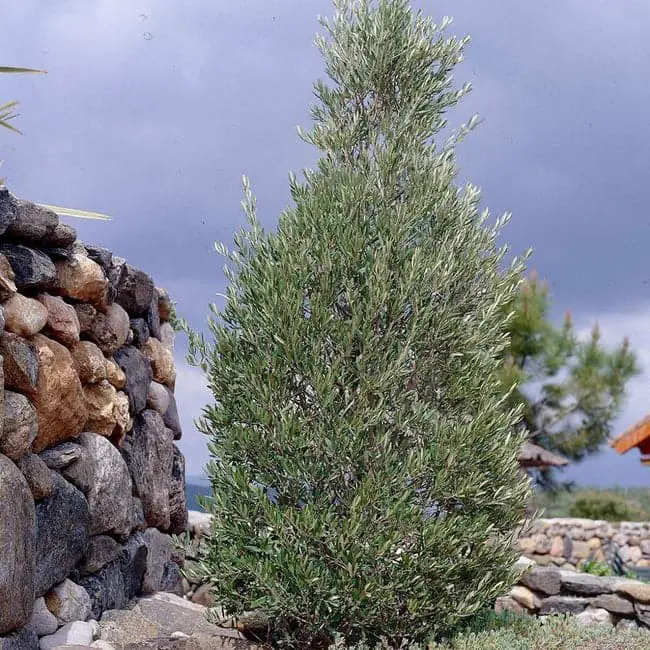
For those with limited outdoor space, this compact olive tree is an ideal choice. Reaching only about half a meter in height, it has a petite habit that won’t overwhelm small gardens. The leaves are small and dark green on top, but have a silvery-grey sheen underneath. In late spring or early summer, white flowers bloom, followed by tiny black olives in autumn. This olive tree is extremely low-maintenance, thriving in most soil types and tolerating drought once established.
It’s perfect for potting up as a patio plant or growing in the ground to create an informal hedge or border.
Manzanilla Olive Tree (Olea europaea ‘Manzanilla’).

The Manzanilla Olive Tree’s name is rooted in Spanish, with ‘Manzanilla’ translating to ‘little apple’. This nod refers to the small, round fruits that grow on this tree. Its reputation as a popular choice for home gardens and orchards stems from its impressive disease resistance and low-maintenance care requirements.
This versatile olive tree thrives in most soil types and climates, but it does have a preference for basking in the sun and having well-drained soil to call its own.
With proper care, the Manzanilla Olive Tree will reward you with fruit-bearing years.
The Manzanilla olives themselves are small and round, with a thin skin that gives way to pale green or yellow flesh and a prominent pit in the center. The flavor profile is characterized by a mild, buttery taste with subtle hints of apple. Typically harvested between October and November, these fruits ripen in the fall.
The Manzanilla Olive Tree’s enduring popularity among home gardeners and orchardists alike can be attributed to its remarkable disease resistance and ease of care, making it an excellent choice for those looking to cultivate a thriving olive tree.
Maurino Olive Tree (Olea europaea ‘Maurino’).

The Maurino olive tree, a cultivar of Olea europaea or European olive, has its roots on the island of Sicily. Introduced to the United States in 1876, this tree has since become a popular choice for home gardens and commercial production due to its disease-resistance and ability to thrive in poor soils.
Characterized by small, black fruit and gnarled branches, the Maurino olive tree is a versatile plant that not only produces oil-rich fruit but also yields wood suitable for crafting furniture and other woodworking projects.
Mission Olive Tree (Olea europaea ‘Mission’).

With over 250 years of history in California, the Mission olive cultivar has become an integral part of the state’s agricultural landscape. Introduced by Franciscan friars in the 18th century, this cultivar thrives under the Golden State’s Mediterranean climate. The tree itself stands tall at a height of 20-30 feet (six to nine meters), boasting elliptical, gray-green leaves that are a hallmark of its identity.
The fruit it produces is small and darkly colored, with a high degree of drought tolerance making it an attractive choice for farmers and gardeners alike.
As a result of its widespread cultivation, the Mission olive has become a staple in California’s olive oil industry. Whether used commercially or at home, the oil extracted from these olives is renowned for its fruity, peppery flavor profile and impressive polyphenol content – an important indicator of antioxidant properties.
Montra Olive Tree (Olea europaea ‘Montra’).
This olive tree, known as Montra, was named by the California Rare Fruit Growers (CRFG) in Santa Cruz, CA. With its medium size and robust vigor, it boasts dark green, lance-shaped leaves that provide a stunning backdrop for the small, oval-shaped fruit that ripens to a rich black color. The high oil content of the fruit is particularly noteworthy, as it yields an exceptional quality olive oil.
Furthermore, Montra’s cold hardiness allows it to thrive in temperatures as low as 20°F (-29°C), making it an attractive option for those looking to cultivate their own olives. Notably, this tree is relatively easy to care for and produces a bountiful harvest, making it an excellent choice for olive enthusiasts.
Niçoise Olive Tree (Olea europaea ‘Niçoise’).
The Niçoise olive tree stands out with its striking appearance, reaching heights of up to 20 feet and boasting dark green, glossy leaves that adorn its branches. These branches are also characterized by small, white flowers that add a touch of elegance to the overall aesthetic. The fruit produced by this tree is compact and black in color, with a distinctive bitter flavor. As a native to the Mediterranean region, the Niçoise olive tree plays a significant role in the production of olive oil.
It is also known as the French olive tree and has gained popularity for landscaping purposes in southern France. For those seeking an attractive yet low-maintenance addition to their landscape, the Niçoise olive tree warrants consideration.
Nocellara Del Belice Olive Tree (Olea europaea ‘Nocellara Del Belice’).
The Nocellara Del Belice olive tree, a cultivar of Olea europaea, has been a staple on the Italian island of Sicily for centuries. Its journey began when it was brought to the United States in the early 1900s, where it thrived due to its hardy nature. This large tree can grow up to 30 feet tall and 20 feet wide, boasting dark green, glossy leaves that provide a striking contrast against the white flowers that bloom in the spring.
What’s unique about the Nocellara Del Belice olive is that it’s self-pollinating, allowing it to flourish without the need for another tree of its kind. As a result, it’s often sought after for culinary purposes due to its large size and mild, buttery flavor. The olives can be savored fresh or incorporated into various dishes, while the oil extracted from them is also highly prized.
Pendolino Olive Tree (Olea europaea ‘Pendolino’).

The Pendolino olive tree, a cultivar of Olea europaea, is renowned for its small, black olives with an elongated shape. Its unique characteristic lies in the pendulous nature of its fruit. Native to Italy, this variety was introduced to California in 1876. One of its notable features is its self-fertile properties, allowing it to produce olives without the need for cross-pollination. Additionally, Pendolino olive trees are frost-hardy, capable of withstanding temperatures as low as 15°F (-9°C).
Furthermore, they thrive when grown in containers, making them an ideal choice for those seeking a compact and resilient tree.
Picholine Olive Tree (Olea europaea ‘Picholine’).
The Picholine olive tree, with its ability to reach heights of up to 15 feet, is a stunning and vigorous specimen that boasts dark green, glossy leaves and small, rounded fruit. Its adaptability and low-maintenance requirements make it an ideal choice for home gardeners seeking a bountiful harvest of olives.
Picual Olive Tree (Olea europaea ‘Picual’).
The Picual olive tree, a cultivar of the olive tree, is widely cultivated in Spain and Portugal. Its fruit boasts an oval shape and deep green hue. Reaching heights of up to 20 meters (66 feet) and enjoying an average lifespan of 150 years, this tree is notable for its hardiness. It can withstand temperatures as low as -15°C (0.32°F), making it resistant to cold snaps. Furthermore, the Picual olive tree is drought-tolerant, capable of enduring prolonged dryness.
The fruit yields a high-quality olive oil with a fruity, peppery flavor, prized for its culinary and cosmetic applications. Used in cooking, as a salad dressing, and even in soap-making, this versatile oil has gained popularity worldwide. Originating from the Mediterranean region, specifically Spain or Portugal, the Picual olive tree was introduced to California in the early 1800s.
Tsunati Olive Tree (Olea europaea ‘Tsunati’).
The distinctive features of Tsunami olive trees include their strikingly large and glossy leaves, which provide a stunning visual display. The trees also produce fragrant white flowers that add to their allure. But the real highlight is the fruit – small, black, and bursting with a rich, buttery flavor. This makes them an excellent choice for extracting oil, as well as enjoying fresh or incorporating into salads.
Wilsoni Olive Tree (Olea europaea ‘Wilsoni’).
While there are numerous cultivars of olive trees, the Wilsoni variety stands out for its popularity. This fast-growing tree can soar to impressive heights of up to 20 feet, with dark green leaves boasting a striking silvery sheen. As the seasons change, white flowers bloom in the spring, heralding the arrival of small, black fruit that is not only edible but also a delight to consume. What’s more, Wilsoni olive trees demonstrate remarkable resilience in the face of harsh conditions.
They can thrive in cold temperatures as low as 15 degrees Fahrenheit and are equally adept at coping with drought, making them an excellent choice for those living in arid regions where water conservation is crucial.
Planting olive trees.
Growing Zones for Olive Trees.
Olive trees have been cultivated for centuries, with their origins tracing back to the Mediterranean basin. Today, they are grown extensively not only in their native region but also in other parts of the world, such as California. The state’s climate is particularly well-suited for olive cultivation, boasting a mediterranean climate characterized by mild winters and warm summers.
This type of climate allows olive trees to thrive with minimal irrigation requirements and drought tolerance, making it an ideal environment for their growth.
Olive tree growth rate.
While the average annual growth rate for an olive tree is around 15 cm, this figure can fluctuate significantly depending on the specific type of tree and environmental conditions. Factors such as climate and age also play a crucial role in determining the pace of growth. For instance, olive trees thriving in warmer climates tend to exhibit faster growth rates compared to those in cooler regions. Furthermore, younger olive trees typically grow more rapidly than their mature counterparts.
When to plant olive trees?
When it comes to planting olive trees, timing is everything. In areas with a more moderate climate, the ideal time to plant is during the fall season when temperatures are milder and the soil has a better chance to cool down. This allows the tree’s roots to establish themselves before the scorching summer heat sets in. However, if you reside in regions with a Mediterranean climate, characterized by mild winters and warm, dry summers, you have more flexibility.
Olive trees can thrive in these conditions year-round, making them an excellent choice for gardeners in such areas.
Where to plant olive trees?
To successfully grow an olive tree, begin by identifying a location that basks in full sun for at least six to eight hours daily. This is crucial, as olive trees require sufficient sunlight to thrive. Additionally, ensure the soil drains well, as these trees are intolerant of soggy conditions. With your sunny spot and well-drained soil secured, you can proceed to dig a hole for your tree.
The hole should be approximately twice the width of the root ball and just deep enough to level the root ball with the surrounding soil, allowing for proper drainage and growth.
How to plant olive trees
When planting olive trees, proper technique is crucial for optimal growth. To get started, select a spot that receives direct sunlight, as this will promote healthy development. Next, consider the soil type: olive trees thrive in well-drained environments, so if your yard’s soil is heavy or prone to waterlogging, mix in some sand to enhance drainage. As you prepare the planting site, remember to dig a hole roughly twice as wide as the tree’s root ball, but not deeper than its original container.
Gently remove the tree from its packaging, taking care to loosen any tightly wrapped roots. Place the olive tree in the hole so that the top of the root ball is level with the surrounding soil, then begin backfilling the hole with a gentle tamping motion. Finally, water the newly planted tree thoroughly to ensure a strong start.
How deep to plant an olive tree?
When introducing an olive tree to your garden, it’s essential to consider the optimal planting depth. A general rule of thumb is to dig a hole that is at least twice as deep as the width of the root ball. This allows for proper root development and establishment. Once you’ve excavated the site, gently place the root ball into position and begin backfilling with soil.
As you fill the hole, use your hands or a trowel to firmly secure the soil around the base of the tree, ensuring it’s stably rooted. Finally, provide the tree with a thorough watering and apply a layer of mulch around its perimeter to conserve moisture.
How far apart should you plant olive trees?
Olive tree planting typically involves spacing trees 15-20 feet apart. Yet, various factors can influence this distance, including the specific olive tree variety and root system size. To ensure optimal growth, it’s crucial to consider these elements when determining the ideal spacing for your trees. A general guideline is to err on the side of caution and plant trees slightly farther apart than initially thought, providing ample room for their growth and preventing overcrowding.
How much space do you need for an olive tree?
When it comes to growing an olive tree, one of the most frequently asked questions is how much space they require. The answer lies in the variety you’re looking to cultivate. While some types can grow quite large, others remain relatively compact. As a general rule, most olive trees need around 15-20 feet of clearance to reach their full potential and flourish.
How to grow olive trees from seeds?
Growing olive trees from seeds can be a delightful and fulfilling experience for gardeners of all levels. While it may seem daunting at first, with the right guidance, you can successfully cultivate these majestic trees. Here’s a step-by-step guide to help you get started:Begin by selecting high-quality olive seeds, which will ensure your tree grows strong and healthy. Next, soak the seed in water for 24 hours to soften the seed coat and stimulate germination.
Once the seed is ready, plant it in a well-draining potting mix, choosing a location that receives ample sunlight. Olive trees thrive in sunny spots, so make sure to give your seedling plenty of natural light. After planting, water the seed thoroughly and maintain consistent moisture levels. Germination can take anywhere from two weeks to two months, so be patient and don’t rush the process. When the seedling emerges, it’s crucial to provide a steady supply of water without overwatering.
Young olive trees are sensitive to excessive moisture, which can cause them to drown. As your tree establishes itself, you’ll find it becomes more drought-tolerant, but for the first year or two, monitor its watering needs carefully to prevent drying out. With these simple steps and a little care, you can successfully grow olive trees from seeds and enjoy their beauty and bounty in your own garden.
How to grow olive trees from cuttings
To cultivate your own olive tree from scratch, start by taking cuttings from a healthy, mature parent tree. This technique is relatively straightforward and will yield a robust, genetically identical tree. To begin:First, locate a thriving olive tree with no signs of pests or diseases. Opt for one that’s at least three years old, preferably five or more. Next, take multiple cuttings, as not all will develop roots.
Each cutting should be around eight inches long and harvested from the parent tree’s new growth. To collect your cuttings, use a sharp knife or pruning shears to make a clean incision just below a leaf node at an angle that maximizes stem contact with the soil. Once you have your cuttings, plant them in a well-draining potting mix-filled container with drainage holes. Water until the soil is moist but not waterlogged, then insert the cuttings.
Cover the pot with plastic wrap or a glass jar and place it in a warm, sunny spot. Maintain consistent moisture levels and wait for four to eight weeks, during which time your cuttings should establish roots. After rooting, you can transplant your young trees into individual pots or directly into the garden. Choose a location that receives full sun and boasts well-draining soil. Water your newly planted olive trees regularly, particularly in their first year.
Once established, they tend to be relatively drought-resistant.
How to care for olive trees
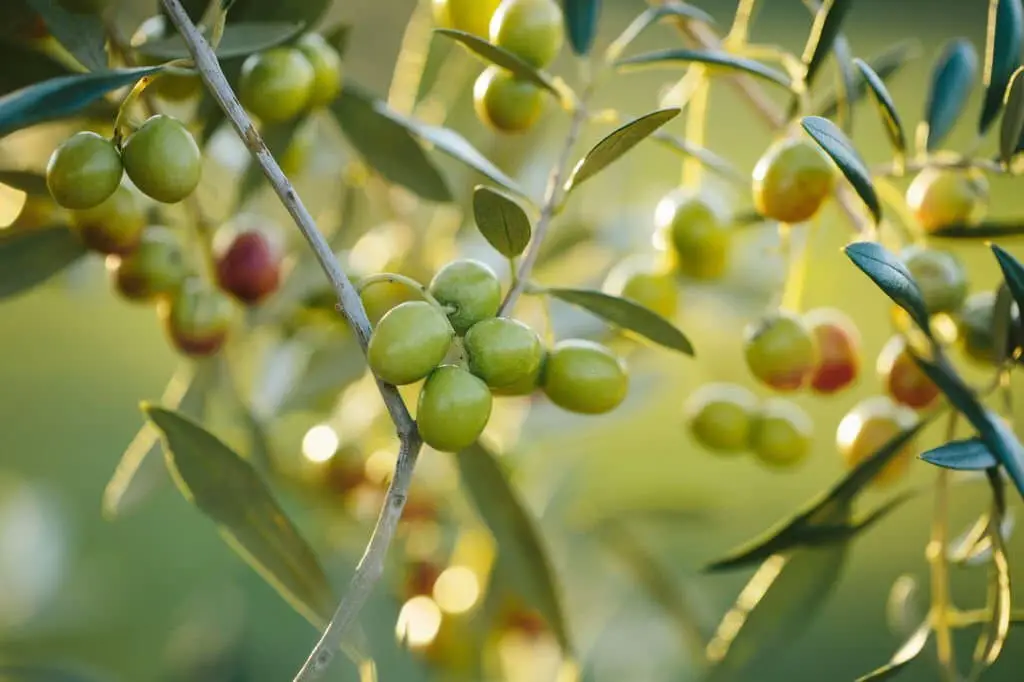
Sun and shade needs.
Olive trees thrive in conditions that balance sunlight and shade, requiring at least six hours of direct sunlight daily. While they can tolerate some shade, excessive shading will negatively impact fruit production. In regions experiencing hot summers, providing afternoon shade can help protect the tree from intense heat. Conversely, during winter months, olive trees prefer reduced sunlight and can thrive in shadier environments.
For those residing in colder climates, it’s essential to provide protection from frost by planting the tree in a sheltered location or covering it with a frost blanket when necessary.
Watering needs.
Olive tree care requires attention to their watering needs, as they are drought-tolerant yet still require adequate moisture to thrive and produce olives. While young trees may need more frequent watering than mature ones, the frequency ultimately depends on weather conditions and soil type.
Drip irrigation or soaker hoses are ideal for watering olive trees, as they help prevent leaf wetness that can lead to disease.
In hot, dry spells, daily or every-other-day watering might be necessary, whereas cooler weather or well-drained soils may allow for weekly or bi-weekly watering.
It’s crucial to err on the side of caution and underwater rather than overwater, as excessive moisture can be detrimental. If unsure about optimal watering schedules, consult with local nurseries or extension offices for personalized guidance.
Temperature needs.
Olive trees possess an unique ability to withstand freezing temperatures, albeit temporarily. While they cannot survive prolonged exposure to sub-freezing conditions, they can endure brief periods of cold weather before succumbing. This resilience allows them to thrive in regions with mild winters, provided they are safeguarded from extreme cold snaps.
When selecting a location for your olive tree, ensure it is not vulnerable to sustained temperatures below freezing.
If you reside in an area with harsh winters, consider planting your tree in a sheltered spot, such as near a building or against a south-facing wall that provides protection from the elements.
While full sun is essential for fruit production, avoid locations shaded by other trees or structures to prevent reducing yields. Ideally, olive trees prefer temperatures between 60 and 80 degrees Fahrenheit.
If you live in an area with scorching summers, provide your tree with access to shade and ample water to mitigate the stress caused by excessive heat.
Soil Needs.
To grow olive trees successfully, it’s essential to understand their specific soil requirements. Olive trees prefer well-draining soil with a pH between 7 and 8. The best way to determine if your soil is suitable is by taking a sample to a local cooperative extension office or nursery for testing. If the test results show that your soil needs amendments, don’t worry – there are several solutions to improve its quality.
Adding organic matter is always beneficial, and if your soil is too alkaline, sulfur can be used to balance it out. Once you’ve prepared the soil, you’re ready to plant your olive tree. When choosing a location, ensure it receives full sun and has enough space for the tree to grow, as they can reach significant sizes. Before planting, dig a hole that’s twice as wide as the tree’s root ball and just as deep. Remove the tree from its container and loosen any bound roots.
Place the tree in the hole, filling it with soil while gently tamping it down.
Fertilizing needs.
Olive trees thrive on a diet of regular fertilization, particularly during early spring when leaves begin to bud. Timing is crucial – apply a balanced fertilizer like an all-purpose or citrus blend around the base of the tree, extending outward to the outermost branches (drip line). Ensure the fertilizer stays clear of the trunk to prevent damage. To activate the nutrients, thoroughly water the area.
For mature trees, consider top-dressing with compost in early spring, replenishing vital nutrients depleted over winter. Apply a layer of compost around the base of the tree, extending outward to the drip line, and then give it a good soaking.
Pruning Olive Trees.
While some may view pruning as a necessary evil when it comes to olive trees, it’s an essential step in maintaining their health and productivity. Whether you’re a fan of pruning or prefer to let nature take its course, understanding the basics is crucial. The approach you take will depend on factors such as the tree’s age, type, and your personal preferences.
For those new to olive trees or unsure about pruning their specific tree, consulting with a professional is highly recommended before attempting any cuts. Once you have a solid grasp of the fundamentals, however, pruning becomes a relatively straightforward process that can be accomplished with minimal equipment. Pruning an olive tree bears some resemblance to giving it a haircut – aim to remove any dead or dying branches, as well as those growing inwardly or crossing over other limbs.
Additionally, thinning out the canopy allows for increased light and air penetration throughout the tree. In general, olive trees are pruned in late winter or early spring, preceding new growth. This timing is advantageous because it’s easier to visualize the tree’s structure without leaves obstructing your view. Pruning an olive tree is a skill that requires patience and practice to master. With time and experimentation, you’ll develop the necessary skills to keep your tree thriving.
And as a bonus, the results will be well worth the effort.
Propagating olive trees.
Olive trees can be propagated through various methods, with one of the most popular approaches involving the use of cuttings from an existing tree. This technique is typically employed during late winter or early spring, just before new growth begins to emerge. To take a cutting, utilize a sharp knife or pruning shears to remove a branch approximately the thickness of a pencil. Then, cut the branch into sections that are around six inches in length, ensuring each piece has at least two leaves.
Next, dip the cut end of the branch in rooting hormone before planting it in a pot filled with moistened potting mix. Cover the pot with plastic wrap or a clear lid to create a humid environment and place it in a bright, sunny spot. Regular watering is crucial to keep the soil consistently moist but not waterlogged. As the weeks pass, new growth should begin to appear, indicating the establishment of roots.
Once this has occurred, the olive tree can be transplanted into a larger pot or directly into the ground.
Transplanting olive trees.
The initial step involves excavating a trench that’s twice as wide and deep as the root ball of the tree. This is crucial for providing a solid foundation for the tree’s roots to establish themselves in their new environment. To do this, you’ll need to carefully remove the tree from its current pot or container, taking care not to damage any of the delicate roots. As you do so, take note of the root system and make sure to handle it with care.
Once the tree is out of its pot, begin backfilling the trench with a well-draining soil mix. Use your hands or a tool to gently firm down the soil as you go, ensuring that air pockets don’t form and impede the growth of the roots. As the trench reaches approximately half-full, it’s time to introduce water into the mix. Fill the trench with water, allowing it to drain completely before continuing to fill with soil.
Once the hole is fully filled, add a layer of organic mulch around the base of the tree, taking care not to let it come into contact with the trunk. Finally, give your newly transplanted tree a good soaking and maintain regular watering schedules for the first few weeks after transplanting to ensure its successful establishment in its new home.
Repotting olive trees.
To repot an olive tree, follow these simple steps. While the process is straightforward, it does demand a measure of patience and care. Begin by collecting your essential tools: a new pot that’s at least two inches wider and deeper than the current one, high-quality potting soil, a trowel, and a pair of gloves. With your supplies in hand, you’re ready to start. Start by carefully removing the tree from its existing pot. Gently tease out the roots and pull the tree free.
If the roots are tangled or matted, don’t hesitate to use a sharp knife to make precise cuts. Once the tree is out of its old pot, place it in its new home and fill the space with potting soil. Use your trowel to gently firm the soil around the roots before giving the tree a good soaking.
Pests and Diseases.
Olive trees are vulnerable to a range of pests and diseases that can significantly impact their health if left unmanaged. Among the most common culprits are the olive fly, scale insects, and the olive twig borer. Additionally, fungal diseases such as root rot and leaf spot pose a significant threat. The olive fly is particularly damaging, with its larvae feeding on olives and causing them to rot.
Scale insects, meanwhile, attach themselves to leaves and stems, weakening the tree and making it more susceptible to disease. The olive twig borer lays eggs in new growth, causing twigs to break and potentially leading to disease susceptibility. As for fungal diseases, they can cause leaves to turn yellow or brown and drop off, even resulting in the death of the tree if left untreated.
A comprehensive understanding of these pests and diseases is crucial for effective management and preservation of olive trees.
FAQs
How many varieties of olives are there?
While it’s not uncommon to think that there are only a few varieties of olives, the reality is far more diverse. In fact, there are an astonishing number of olive types, with some estimates suggesting over 500 distinct varieties. This incredible diversity is just one of the many fascinating aspects of the world of olives.
Which type of olive tree is best?
While there are numerous varieties of olive trees, each boasting its own distinct features, determining the ideal type for your purposes requires consideration of specific needs and preferences. Among the most well-known and widely cultivated olive tree types are the Italian, Spanish, and Greek varieties, each offering a unique set of characteristics that may make one more suitable than another for a particular context.
Which olive trees are dwarf?
While olive trees come in a range of shapes and sizes, some varieties are notable for their compact nature. Dwarf olive trees, in particular, stand out with their modest stature and slower growth rate compared to their taller counterparts. So, what exactly constitutes a dwarf olive tree? The answer lies in the variety itself, as there are several distinct types to explore.
Among the most popular dwarf options are the ‘Arbequina’, ‘Frantoio’, ‘Leccino’, and ‘Pendolino’ – all of which are well-suited for home gardens or container cultivation.
How hard is it to grow olive trees?
While olive trees are relatively low-maintenance, they do demand some fundamental attention to thrive. Specifically, olives relish full sun and well-drained soil conditions, which support their natural drought tolerance once established. However, young trees require consistent watering to establish a strong foundation. In terms of nutrition, fertilize your olive trees bi-annually with a balanced fertilizer to promote healthy growth.
Pruning is also essential, as it stimulates new growth and fruit production annually. To safeguard against harsh winter conditions, consider covering your olive trees with a frost blanket or burlap to protect them from cold weather. With proper care, you’ll be enjoying fresh olives in no time.
Are olive trees toxic to dogs?
Olive trees themselves are not poisonous to dogs, but the fruit they produce can be hazardous if consumed excessively. When a dog ingests olives in large amounts, it may exhibit signs such as vomiting, diarrhea, and stomach discomfort. If you suspect your furry friend has eaten olives and is displaying any of these symptoms, seek immediate attention from your veterinarian.
Conclusion
When it comes to adding some natural beauty to your home, few options compare to the allure of an olive tree. Not only do they bring a touch of Mediterranean charm to any room, but with proper care and attention, they can thrive for many years to come. With so many varieties to choose from, it’s essential to research thoroughly before selecting the perfect specimen for your space.
And once you’ve brought your new olive tree home, be sure to take advantage of its leaves – not only are they a delight to craft with or use in cooking, but the oil extracted from olives is a healthy and flavorful alternative to other oils. By following some simple care tips, you can look forward to years of enjoyment from this stunning addition to your home.


